History

The Bastogne Barracks was the location of the Allied headquarters in December of 1944. After chasing away the retreating German army from France and Belgium the allied forces stopped in Belgium at the Dutch and German border. They liberated the much needed port of Antwerp for its harbour facilities but could not use it properly until they controlled the Scheld river. Operation Market Garden took place on the 16th until the 25th of September in the Netherlands and meanwhile it stayed relatively quiet in Belgium and the Ardennes from September 1944 on. There was plenty of combat action to the North and North-East of the Ardennes. In the Netherlands the Battle for the Scheld started on 2nd October 1944. In Germany the Battle for the Hürtgenwald started on 19 September 1944, while on the same day the Battle for Overloon and Venray started in the Southern part of the Netherlands.
The failure of Operation Market Garden and the huge loss of American Forces in the Hürtgenwald gave the German high command the spirit to strike back and try to split the allied forces in two and put a wedge between the American and English commanders.

Unternehmen Wacht Am Rhein

The German high command started to plan “Unternehmen Wacht am Rhein” – “Operation Guard on the Rhine river”, the Rhine runs parallel to the German – Belgium and German – Netherlands border. At first the operation was called “Herbstnebel”, “Autumn Haze”, but it was later changed to Wacht am Rhein.
The German Oberkommand gathered 13 infantry divisions and 7 armoured divisions for this operation. The bulk of the allied forces were occupied in other operations, they only had a meager 6 infantry divisions and 2 armoured divisions to withhold the German assault in the Ardennes. When the weather changed for the worse, when the sky clouded and the allied planes could not fly, the German assault started. Their key objectives were Bastogne and the Harbour of Antwerp. Bastogne because it has seven main roads leading from this town to transport troops to France and the Belgium coast. And the Antwerp Harbour to disrupt allied troops and material transport and divide them in the Netherlands from their troops in Belgium.
Battle of the Bulge
The famous Battle of the Bulge started on the 16th of December in 1944 with a heavy artillery bombardment, followed by advancing German forces, Wehrmacht and SS troops pouring into Belgium. In the spearhead of the advance the Germans sent out soldiers in Allied / U.S. uniforms to remove sign posts and confuse American forces. Otto Skorenzy was in control of the saboteurs, Otto is also known for the successful liberation of Benito Mussolini in Italy on the 12th of September in 1943 during “Operation Eiche”.
Hasso von Manteufell led the 5th Panzerarmee into the Ardennes and towards Bastogne, while to the south Erich Branderberger led the 7th army into battle towards Luxembourg.
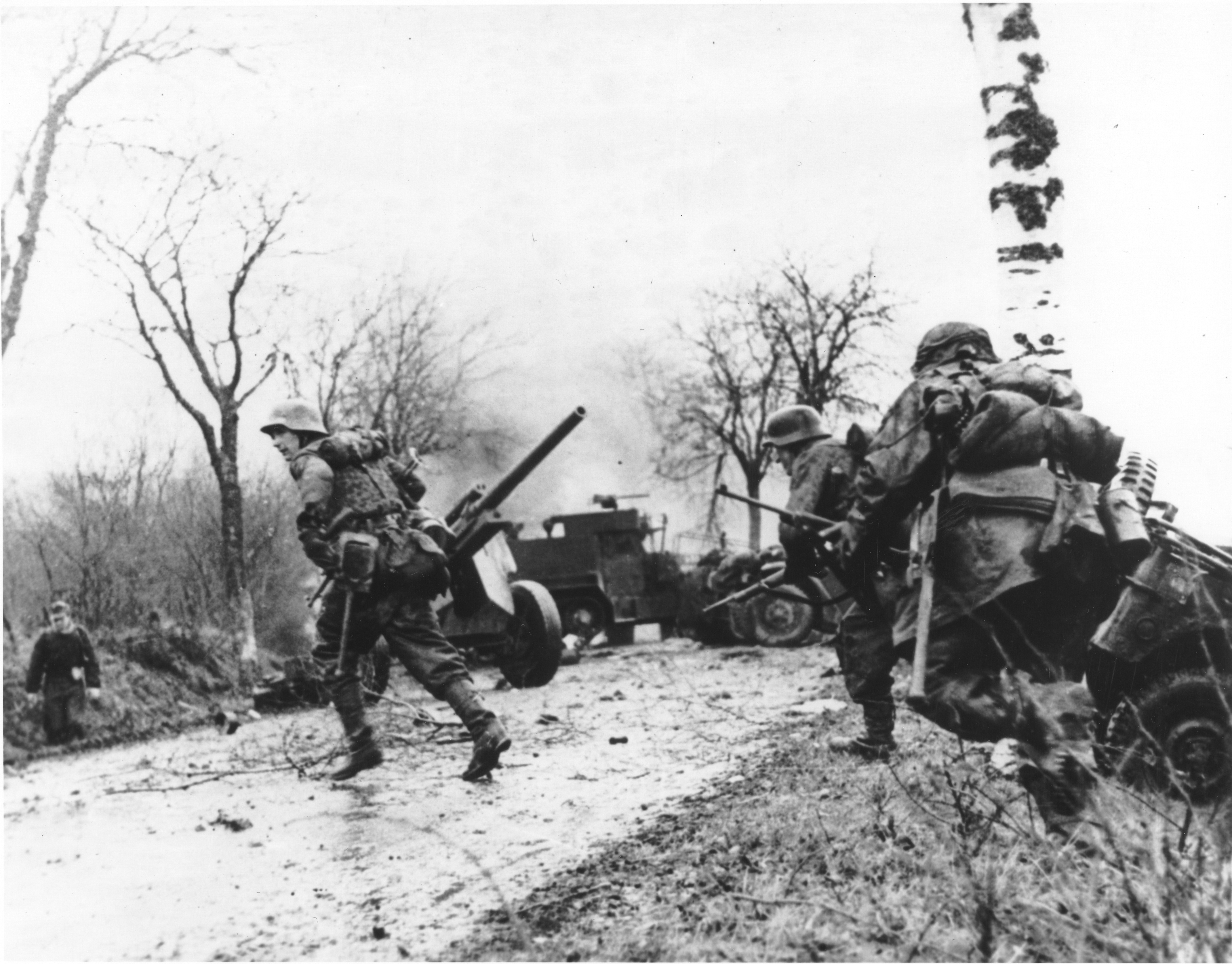
Sepp Dietreich was in command of the Northern part of the assault with the 6th SS Panzerarmee. His fanatic young commander Joachim Peiper was ordered to retake the port of Antwerp as swiftly as possible and by all means necessary. Peiper’s forces captured American Soldiers near Malmedy and executed them on a field near St. Vith on the 17th of December 1944. Ninety American Soldiers lost their lives near Sankt Vith and were left in the snow. Only a few managed to survive to tell the story and the result was that no soldier would give in or give up. It strengthened the Allied forces to the bone and they fought like lions in a winter with temperatures dropping to minus 20 degrees Celsius or minus 4 Fahrenheit.
While the fighting went on in full fury, the Paratroopers of the 101st Airborne Division were sent to Bastogne and dug in. The objective: to withhold the German forces until General Patton arrived with his third army and changed the scale. These men had to endure the full brunt of the German force towards Bastogne and stood their ground. When the sky cleared the Allied Air Force was pounding German armor again and could resupply the troops. On the 25th of January the German forces were driven back and the battle ended.
The loss of men and material was something the German Army could not replace in this stage of the war. Adolf Hitler had made his last gamble. By this time he was very sick and delusional, moving divisions on maps that were long gone.
“Nuts”

At one point in the battle, which looked like a stalemate, German command send a note for the surrender of the Allied forces towards the American commander, Anthony McAuliffe, who had his base at the Bastogne Barracks. ‘Nuts’ was his answer, but not many know where this came from. Anthony McAuliffe had a great mom, who did not allow her son to swear. So Anthony always responded with ‘Nuts’ instead of a curse, which was his reaction to the suggested surrender. The Germans did not understand the answer so Joseph Harper, the US Army errand had to explain it to them and make it a little more obvious to the German commanders and answered with ‘Go to hell’…
Lesser known facts
The battle for the Ardennes was much bigger than the battle of the Bulge. The battle of the Bulge reversed to the shape of the fighting forces on the map, it looks like a Cauldron. Beside the three thrusts into Belgium there was an unsuccessful thrust into the Netherlands called “Operation Wanssum Bridgehead”, or “Schneeman” (Eng: snow man) and was executed from the 1st until the 8th of January 1945 with German Fallschirmjäger (paratroopers) used as ground troops.
To the south of the Ardennes, in northern France, was a bigger assault with the German 1st and 19th army, the 6th SS-Gebirgs-Division Nord were amongst them. ‘Operation Nordwind’ was executed from 31 December 1944 – 25 January 1945. After Nordwind the plan was to execute ‘Operation Zahnarzt’ (Eng: Operation Dentist), to eliminate the 3rd army controlled by George Patton. Operation Nordwind was stopped by the United States Army and the follow up “Operation Zahnarzt” never took place.
On the first of January 1945, when the sky was clear the Luftwaffe was bold to attack the Allied Air Force above Belgium, and their losses were great. Its operational name was “Operation Bodenplatte”. The last time German Paratroopers were involved in a mission and dropped into occupied territory was during ‘The Battle of the Bulge’, it was not as successful as hoped and the FallschirmJägers did not make a difference even though 1200 were dropped behind enemy lines on the night of 16 to 17 December 1944.
Joachim Peiper

Joachim Peiper and his Kampfgruppe, were charged for war crimes due to the massacre near Malmedy and St. Vith. The Battle Group of Peiper was part of the 1st SS Panzer Division Leibstandarte “Adolf Hitler”. They were also responsible for killing the 11 afro American members (the Wereth 11) of the 333rd Field Artillery Battalion in Wereth, Belgium. In total Kampfgruppe Peiper was charged with the killing of 362 prisoners of war and 111 civilians.
Peiper wanted to take full responsibility and pleaded for punishment reduction for his men so they would not be hanged but shot, this was denied. In the end the verdict was changed from the death penalty to life imprisonment. Peiper was eventually released in 1956 after 11 years imprisonment. In 1972 he moved to Traves – France to live a quiet life translating books. He was murdered on the 14th of July in 1976 (Bastille day) when he defended himself from his attackers while being at his house. A group who called themselves the Avengers burned his house and Peiper in it. The group was never identified, but there are strong suggestions that they are former French Resistance members.
Visit Bastogne Barracks
Bastogne Barracks is officially still used as an Army base for the Belgian Army. So don’t be surprised when you are met by a soldier on guard escorting you to the waiting area. But don’t worry, it’s all very friendly and they are happy to have you!

Visitors have to take a guided tour over the premises. The guides are all members of the Belgian Army and passionate about the things they show you. There is so much to show you that a tour takes about two hours and you’ll still feel you have to rush sometimes.
The barracks are split into sections that are very interesting to visit:
The 101st Airborne Division Headquarters and museum
This is the location of the 101st Airborne Division HQ during the Battle of the Bulge. You can view beautiful dioramas that depict the situation in those days and of course you can visit the very room where Brig. Gen. McAuliffe had his office HQ and gave his famous “Nuts!” answer when the Germans asked him for surrender. The guide will tell you all about this famous story, answer your questions and let you hold WWII gear and weapons to experience what the men of the 101st had to endure. “I’m sorry, did you say ‘hold’?!” Yes, I did.


Most impressive is a special room dedicated to the men that fought here, which they showed us at the end of this part of the tour. On the walls is a display of photographs of all the veterans that have visited the museum in the past.
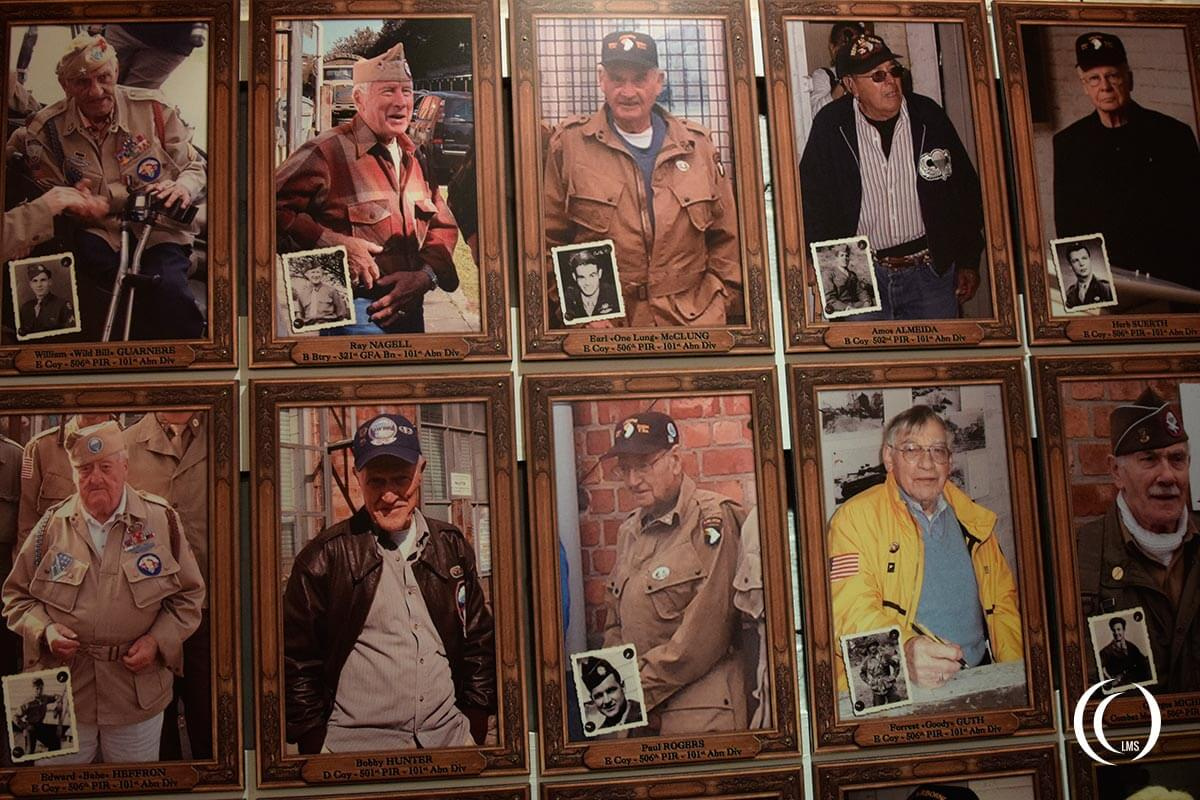
WWII Vehicle Exhibition Hall
Besides the commanders location Bastogne Barracks hosts a massive World War Two tanks and vehicles collection. They try to restore and maintain the vehicles in running condition. The collection ranges from the Russian ISU-152, a Panzer IV ausf. J and the famous Stug to the American, English and French tanks and artillery. A visit is free of charge, but they do have special visiting hours, check the website if you would like to visit this part of the barracks.
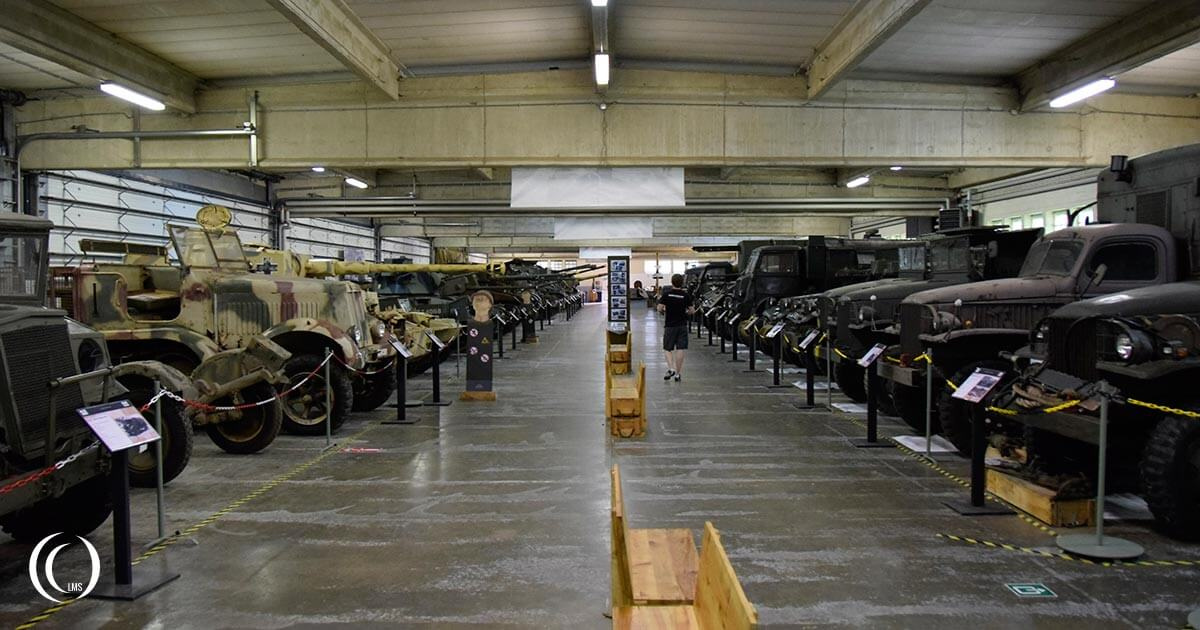
Vehicle Restoration Center
As stated above the organisation restores tanks and vehicles in their full glory. On our tour we had the chance to visit the Vehicle Restoration Center where all the hard work is done, trying to put them together piece by piece. They were then working on a Stug III ausf. F/8, a G13 Hetzer Jagdpanzer and a Russian IS-3 Heavy Tank (see pics below).
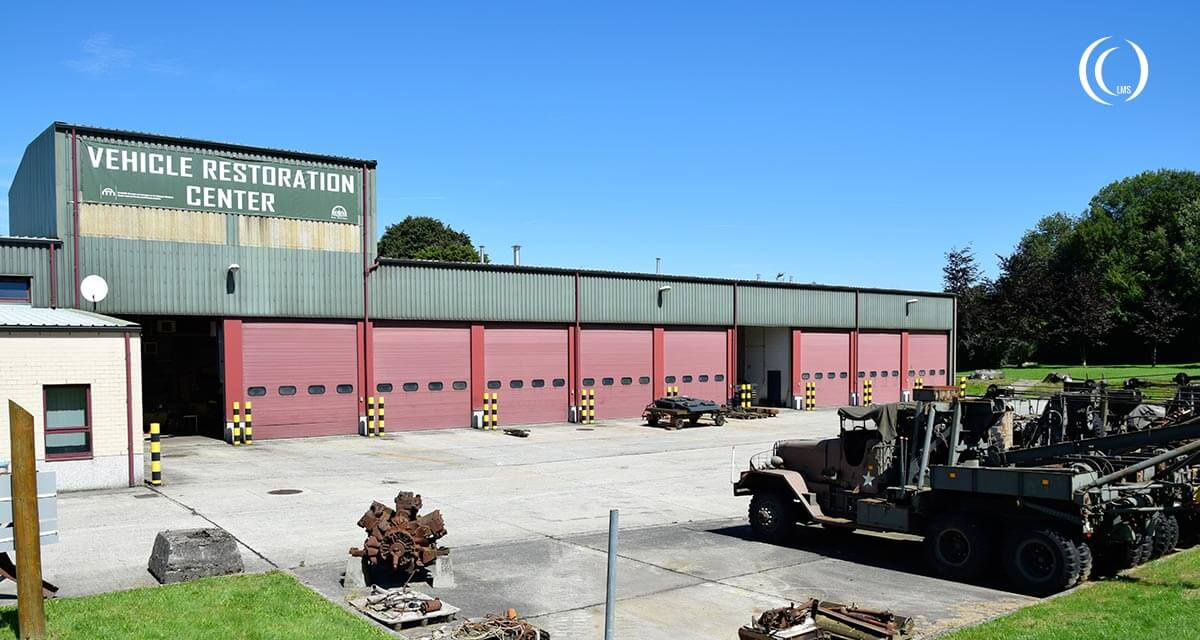

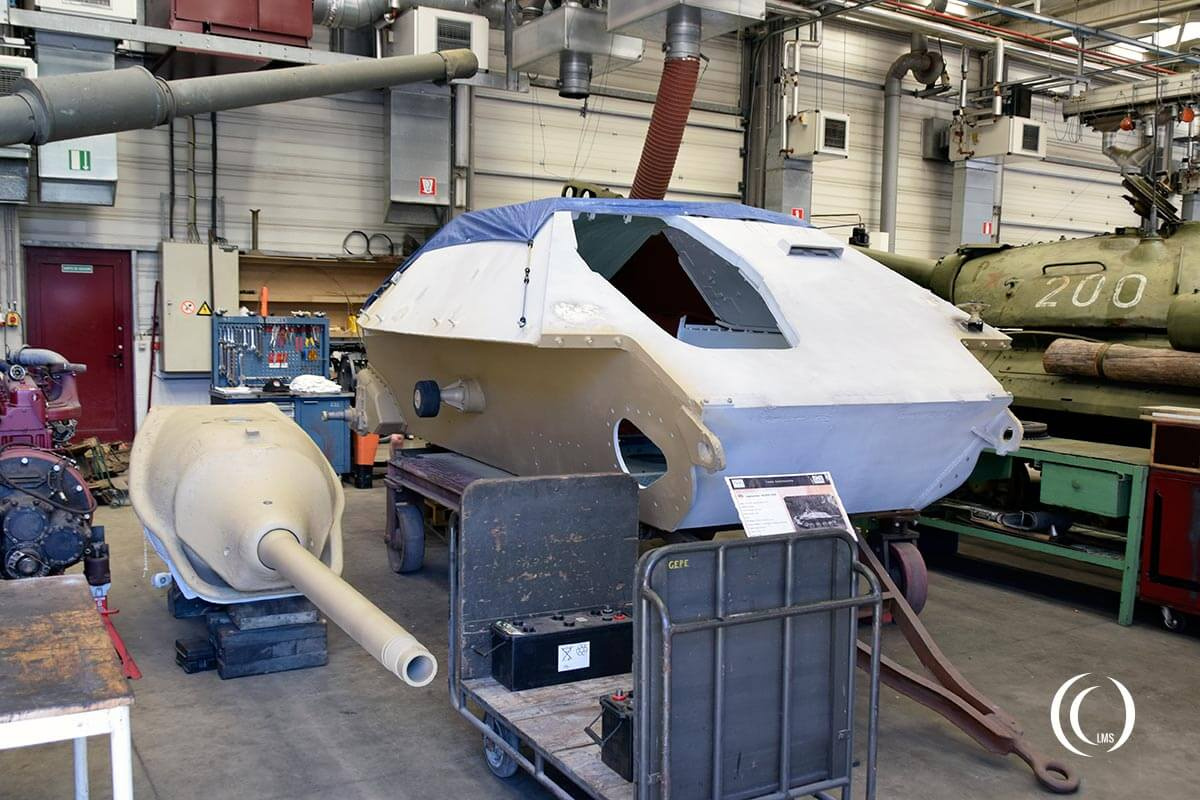

For more information on guided tours and opening hours visit this section of the Royal Museum of the Armed Forces Belgium website.
Wederom een geweldige bijdrage . Vol interesse gelezen.